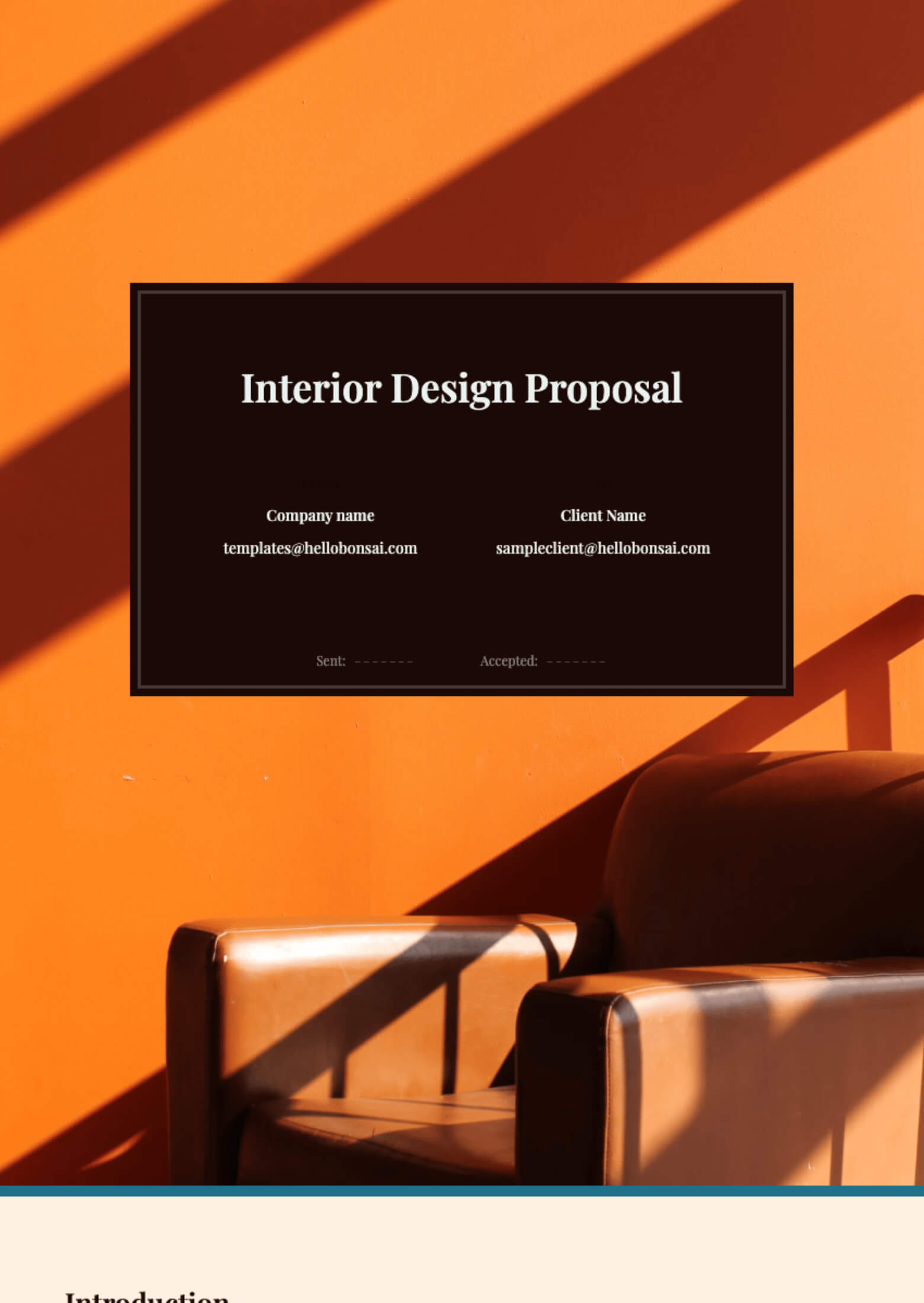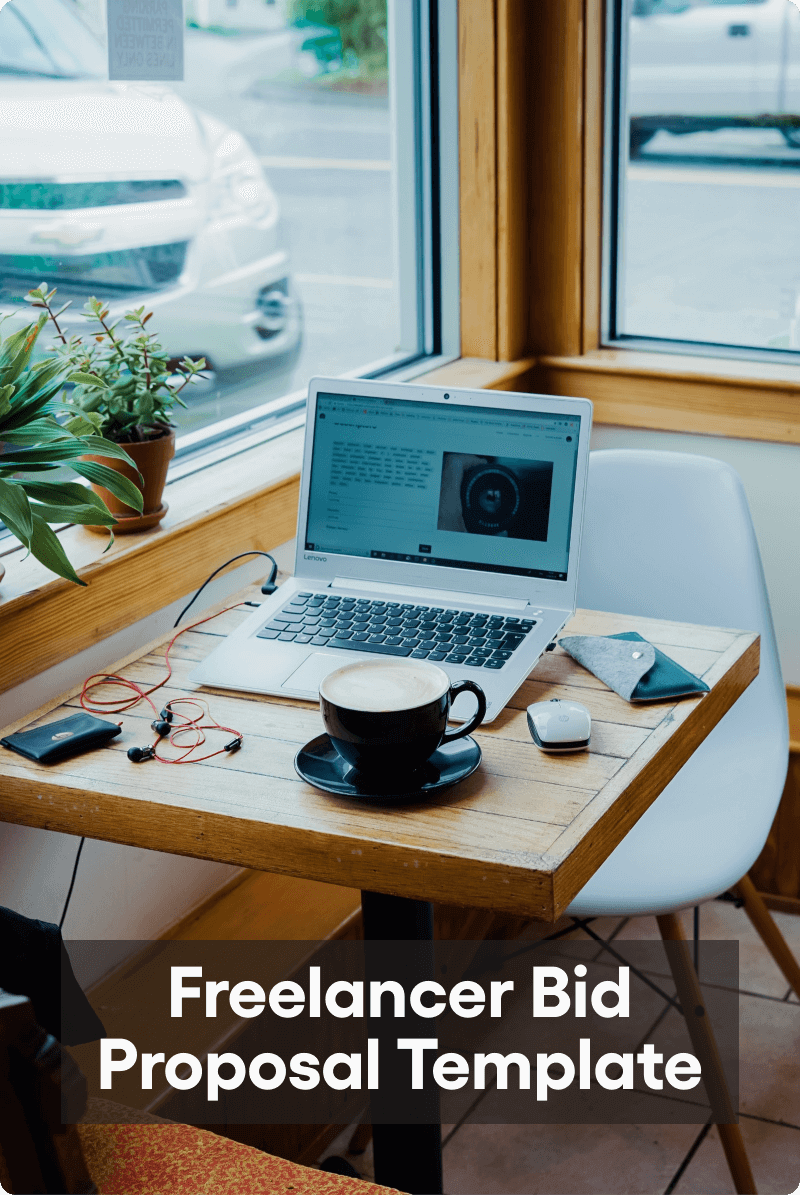What is a Painting Proposal?
A painting proposal is a document that itemizes all the painting services you can offer to a potential client. A good proposal covers the necessary details that your prospect would be interested in knowing—from the plan of action and resources required to the painting estimate and timelines.
On top of these key details, your proposal should convey why you’re a good fit for the project. Think of it as your time to shine and spotlight what sets you apart from other painting contractors—you want to provide a state of the art experience.
It’s also the perfect place to tackle all your client’s paint points, flex your attention to detail, and highlight your understanding of the project—proving that you’ll offer the best value for their money.
With all this work going into the document, writing a painting proposal can feel more challenging than the painting itself. The intricacies of a proposal—documenting the labor costs, identifying the exterior painting area if there is any, completing the prep work, and a lot more—can easily get overwhelming.
What’s the best way to handle this? Create a painting proposal template.
A template pieces together all the nuts and bolts to help you create a winning proposal without wasting time and energy. A professional template is key for creating a stellar proposal that conveys your expertise, summarizes your painting services, and records all the costs involved.
Note: If you’re ready, you can use our world class painting proposal template for free now
What to Include in the Painting Proposal
Ready to put pen to paper—or brush to easel—for your painting proposal template, but unsure where to begin?
A painting proposal is not significantly different from other service-based proposal templates. So, figuring out what sections to cover is a good starting point to prepare your template.
Here are some common elements your client would expect to see in your painting proposal:
Cover letter
Like all proposals, your painting proposal sample should begin with an introduction of your business and painting services. You can talk about your experience as a painting contractor and summarize all the clients you’ve worked with in the past.

This is your opportunity to take center stage and zero in on everything that makes you the perfect candidate for the project.
Your cover letter is also a great place to add a personalized touch—so, don’t forget to customize it for all the paint jobs you’re bidding for.
Scope of work
Outlining the project scope is an essential part of your proposal—the main event, really. It’s where you’ll spell out the project scope and explain your plan of action for the painting job.
Here are some points you can cover in the scope of work section of your painting proposal:
- Area to be covered: include the details of the painting area for the project, both interior and exterior. This part will help in ensuring that both parties are on the same page when it comes to your painting service. Clearly specifying your interior and exterior painting services will also help prevent scope creep and keep the project on track.
- Evaluate problem areas: before writing down your proposal, dig deeper into the projects at hand and analyze any potential flaws in the building that will require extra attention and effort. Let your commercial and residential clients know the thorough work you’ve put into analyzing their property to create this proposal.
- Materials and resources required: list down all the materials you’ll need to complete the painting work and explain which material will do what. For example, the type of caulk required to seal leakage areas or the type of paint needed for exterior and interior areas. Describe your resources in detail to show your prospects that you know what you’re talking about, and so they have a clear idea of your costings.
- Plan of action: highlight your bespoke approach for individual clients and set your pitch apart from a pool of similar proposals for the job. Chalk out your steps of preparation, caulking, and painting to ensure that your clients get a clear picture of how you’re going to proceed with the project.

On top of these key details, your project scope section can also include some specific details from your conversation with the prospective clients. Demonstrate your problem-solving skills and expertise as a painting contractor by jotting down all your client’s concerns alongside potential solutions.
Outline any repair work
After pinning down the scope of work, explain the estimated repair work for the project to help your client understand exactly what you’d need to get started. Examine the property and identify areas that need to be repaired before you can start working your magic.
This will also allow you to customize your template and show the research you’ve put into making the proposal. Use this section of your proposal template to better present your attention to detail.
Schedule and timelines
One of the most vital considerations of any painting project is the time it’ll take until completion. If you have an experienced team capable of finishing up a painting service quickly, highlight it as a key selling point in this part of your proposal.
You should first attempt to understand your client’s expected timeline before customizing your template proposal document. Once you’re aware of their expectations, list down all the resources and materials you’d need and chalk out your action plan. Spend some extra time brainstorming about all the next steps to determine realistic timelines.
Bonsai top tip: When explaining your schedule, go into as much detail as possible. Specify your daily working hours, estimated start and end times, and account for holidays or leave. Adding clarity to your proposal can make your case stronger than others.
Case studies
After you’ve detailed everything your clients want to know, it’s time to talk about your experience as a painter. Include relevant examples to build credibility for your skills and convince your prospects that you know the drill pretty well.
You can pick some of your best works from the past and add details like:
- Non-sensitive client information
- Project type: commercial or residential
- Building details: area, structure, layout, and similar
- Materials and resources used
- Timelines
- Photos of the final work
- Customer testimonials
Adding an example or two can add a lot more weight to your painting proposal and increase your chances of winning the deal.
Payment
Estimating the total costs for a project can be challenging, especially when you know that pitching too high can lose you a good project and low-balling it can mean you’re underpaid for all your hard work.
Instead of shooting in the dark, have a conversation with your prospective clients to understand their budget and expectations. This will also help in qualifying all the leads you get based on price.
When you have some idea of how much your client is willing to spend, you can create a solid plan of action within their budget and easily land the project. Similarly to a quote, your painting proposal template should include a section detailing the cost for every service.
This section of your painting proposal template should include a pricing table to specify the cost of:
- Materials required
- Manpower needed
- Total estimated time
- Add-on services
Carefully analyze the project scope to sum up the final payment terms for your proposal.

How to Write a Painting Proposal
Templates help in creating professional proposals without having to collect, organize, and write down all the details from scratch. The right painting proposal template can be a complete game changer to create perfect proposals effortlessly.
Here are some best practices to follow for drafting a winning proposal:
Personally present your proposal
Painting requires hands-on work. You can’t create a proposal worth its mettle without visiting the property and estimating the complexity of the painting job. A visit to the project premises also gives you the opportunity to chat with your potential clients about their expectations, requirements, and budget.
Once you’ve done the initial legwork to create a stellar proposal, you have to ace the delivery of your proposal as well. Wondering what’s the best way to do that? Simple—a personal and immersive presentation.
Involving your prospects with a live presentation of your proposal can significantly increase its impact. They’ll be more intrigued and pay close attention to what you have to say. It also brings in a personal touch that standard proposals can’t match.
Keep it crisp and concise
You don’t need fancy language and terms to write proposals for a paint job. Instead of confusing your client with complicated jargon and too many sections, keep your proposal’s content short and simple.
Focus on covering the precise details that your client wants to know—like the number of coats, the quantity of paints, and the time for drying and polishing. A to-the-point proposal can position you as a reliable expert.
Creating a Painting Proposal is Simple with Bonsai
Putting together a perfect proposal customized to the needs of every client can be overwhelming. With Bonsai’s carefully crafted painting proposal templates, it’s a walk in the park.
Set the right context for your relationship with a new client and land deals faster with Bonsai’s tried-and-tested templates. Get started in three easy steps:
- Sign up on Bonsai
- Choose a proposal template that meets your preferences
- Edit the template to your liking
Creating proposals has never been so easy. Say goodbye to your tedious proposal software and hello to your efficiency partner—Bonsai.
Painting Proposal Sample FAQs
What do you include in a painting proposal?
Writing a painting proposal is easy when you know the right components to include. Here’s a helpful set of sections you should add to your paint proposal:
- Cover letter
- Scope of work
- Repairs and supervision
- Schedule and timelines
- Case studies
- Final price
Create a template for your proposal with a basic outline and customize it at your convenience.
What is a painting contract?
A painting contract is a fundamental document for a project between a painting contractor and client. This legally-binding contract lays down all the terms of the project and specifies the rules that both parties need to abide by.










































































































%20(1).svg)